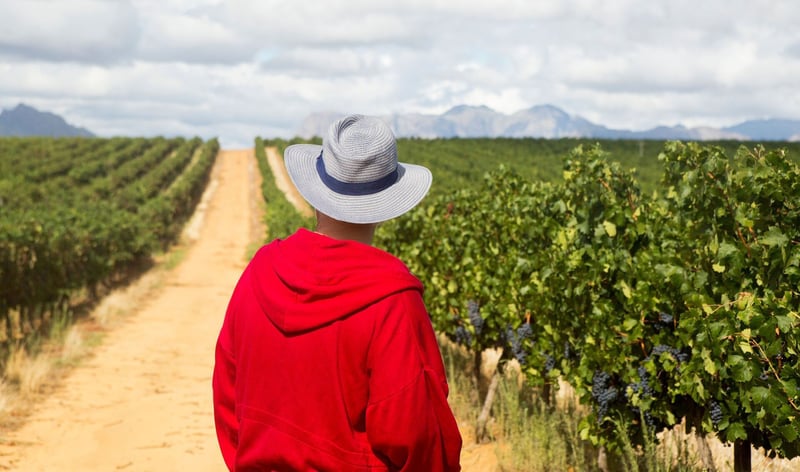
The modern farmer faces plenty of challenges; some historical, some contemporary, and some that simply cannot be avoided – all of which throw the proverbial rock into the plough when it comes to budgeting.
“The biggest challenge a farmer faces with budgeting, is that he can’t. The farmer has little to no control over the price of his produce or the cost of his seeds, fertilizers, chemicals, and fuel,” says Chris van der Schyf, Regional Sales Manager for Bontera SA. “The only thing the farmer can do is try and maximize his yield, but in most cases farmers rather try to cut costs, usually opting for inferior inputs, which don’t result in optimum yields and actually makes their bottom line look even worse.”
Multiple Factors to Consider
Farmers have little control over the selling prices of their produce. These prices fluctuate during the season, and it’s difficult to know when one should sell or commit to a certain price on contract. With many factors influencing the price of input products, such as fertiliser and chemicals, and the markets having become very volatile, the decision of when to procure what input is also a very difficult one.
There are so many factors that farmers have to consider, and nobody can be an expert in all of these fields. That is why it is so important for a farmer to have a team of experts supporting him or her, in different fields ranging from crop protection, cultivar selection, marketing of his produce and more.
New Solutions to Maximize Yields
Biological and regenerative solutions have been proven to increase crop yield, quality and resilience. These types of solutions can help farmers minimize or negate many of the fluctuations experienced from season to season. This includes things like the efficacy of chemicals, the thorough utilisation of fertilisers, the ability for a plant to tolerate stress, and much more. This will in turn bring the eventual outcome of the season’s yield being more in line with the expectation, making budgeting for the next season much easier.
How to Integrate a New Solution
Implementing a new, or different, solution can be a challenging task. “No two farmers are the same. Soils, environmental factors, practices, crops, equipment; these are only a few of the things that need to be considered when implementing a new solution,” says van der Schyf.
A thorough investigation must be carried out by a farmer and his team of experts to ensure all factors are included in the decision-making process. Bontera is a company that is passionate about protecting the environment and their team of experts in biologicals are ready and willing to assist farmers in implementing sustainable biological solutions.
“I firmly believe that a farmer should test any new solution properly when comparing it to his current standard,” says van der Schyf. “The problem with small scale trials is that there are too many variables and it does not accurately reflect the true value a new solution might bring. Large scale trials give much more accurate data, and if that data is not what is expected, it is easier to investigate why this is the case.”
The investigation needs to determine whether the new solution will be practical in the current system or whether the system be changed or improved. It should also look at what the main problems that need to be addressed are, and whether something else should be addressed first in order for the new solution to contribute to its fullest potential.
When to Make these Decisions
The best time to make decisions is as soon as the previous season concludes, while the problems experienced during the season are still fresh in the mind. It also leaves ample time for farmers to have in-depth discussions with their team and formulate a plan of action, with enough time to implement the solutions brought forward.
The Bottom Line?
“Innovation is essential, and consistency is key,” says van der Schyf. Every farmer’s budget should accommodate innovation and the implementation of new, more sustainable solutions. Biological products that offer more consistency should have a fixed position in any farmer's budget.
Get new press articles by email
Latest from
- **What South Africa’s G20 Moment Means For Everyday Investors In 2026**
- Financial Inclusion Is a Human Right
- The Final Countdown Begins As Excitement Builds For Rage 2025 And Its Biggest Celebration Yet
- NAG Levels Up rAge 2025 With Three Massive Zones of Gaming, Tech, Retro Chaos and Collectible Goodness
- Locally Coded. Locally Created.
- Reflecting on Parenting Goals - Seven Meaningful Ways to Reset Before the Holiday Season
- Financial Confidence Is Power
- What Parents Should Look For In A Preschool - The Power of Play-Based Learning
- Monster Brings the Heat - Free cans. Racing rigs. MMA strikes. Call of Duty finals. Pure adrenaline.
- From Builds To Tech To Merch rAge 2025 levels up - A fan-fuelled mega-event like never before!
- CFI Introduces New Hands On Training Seminar at Melrose Arch to Strengthen Practical Skills Development
- Get Ready For The Rand Show 2026
- Fine And Gross Motor Skills Building Blocks for Confident, Capable Children
- PLANET RAGE - The Ultimate Geek Playground
- Plettenberg Bay Arts Association Donates R21,000 to Hospice Plett
The Pulse Latest Articles
- Education Is The Frontline Of Inequality, Business Must Show Up (December 11, 2025)
- When The Purple Profile Pictures Fade, The Real Work Begins (December 11, 2025)
- Dear Santa, Please Skip The Socks This Year (December 10, 2025)
- Brandtech+ Has 100 Global Creative Roles For South African Talent (December 9, 2025)
- The Woman Behind Bertie: Michelle’s Journey To Cape Town’s Beloved Mobile Café (December 9, 2025)
